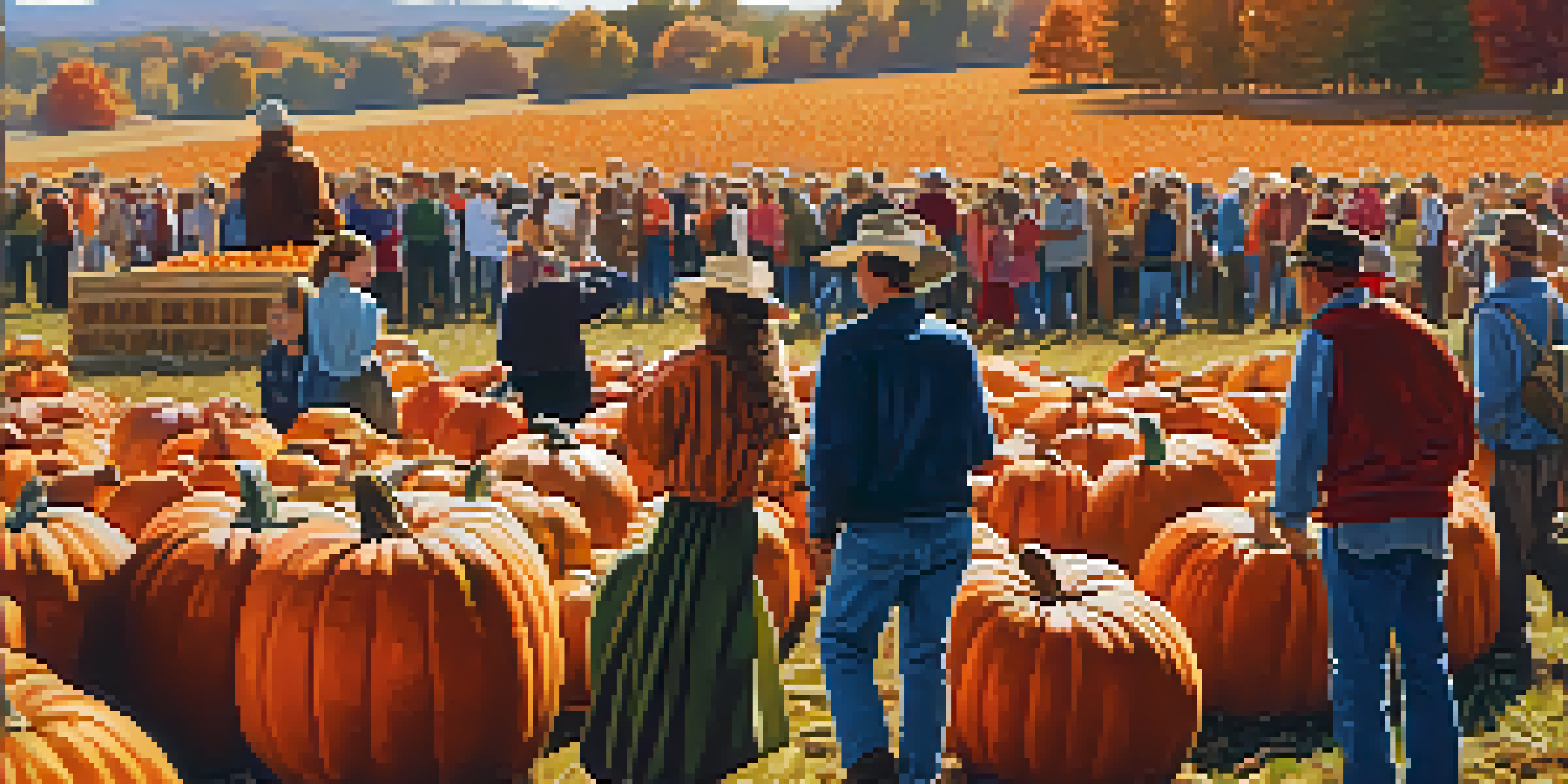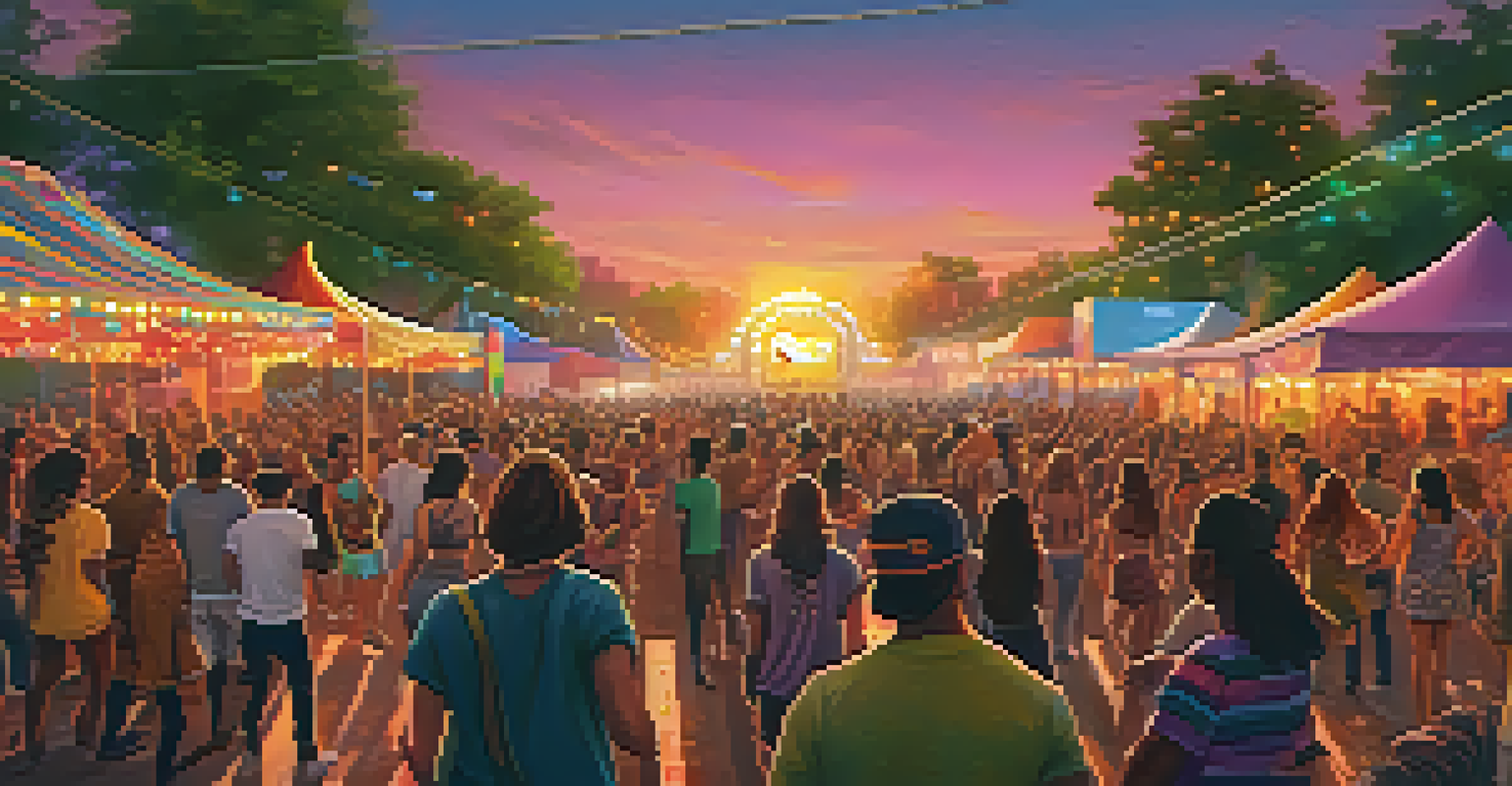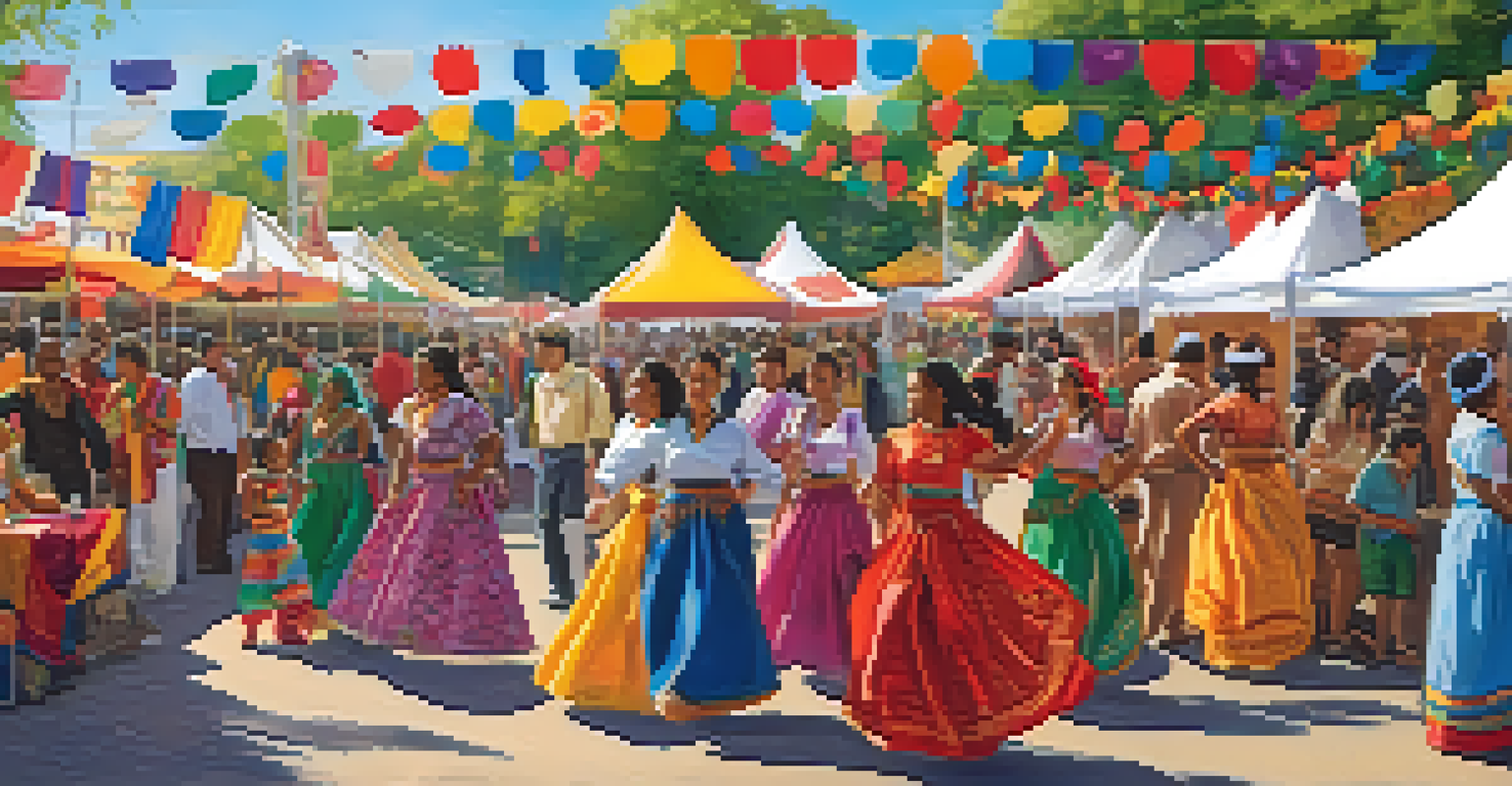The Evolution of American Festivals: Tradition Meets Modernity

The Roots of American Festivals: A Cultural Tapestry
American festivals have deep roots, often tracing back to Indigenous practices and European traditions. These early celebrations were tied to agricultural cycles, significant events, and community gatherings, fostering a strong sense of identity. For instance, harvest festivals celebrated the bountiful crops, while winter solstice events honored the return of light. Over time, these celebrations evolved, incorporating diverse cultural influences that make up the rich tapestry of American society today.
Festivals are a time to come together, celebrate our differences, and appreciate our shared humanity.
As communities grew, so did the scale and variety of festivals. The combination of Indigenous customs with those brought by European settlers created unique regional celebrations, like Mardi Gras in New Orleans, which reflects French, Spanish, and African influences. Each festival became an avenue for cultural expression, allowing communities to showcase their heritage and share it with others. This blending of traditions laid the groundwork for the vibrant festival culture we see today.
Ultimately, these early festivals set the stage for modern celebrations by establishing a framework of community involvement and cultural pride. They remind us of the importance of coming together, whether to honor our ancestors or to simply enjoy each other's company. As we delve into the evolution of American festivals, we’ll see how these historical roots have shaped contemporary celebrations.
The Impact of Industrialization on Festival Celebrations
The Industrial Revolution significantly changed the landscape of American festivals, as urbanization led to the rise of new forms of entertainment. As people flocked to cities for work, traditional rural celebrations began to fade, making way for events that catered to the urban populace. This shift gave birth to large-scale events, like state fairs and parades, which showcased industrial achievements and offered a sense of community amidst the hustle and bustle of city life.

These urban festivals often included attractions like carnival rides, food vendors, and entertainment acts, which appealed to a broader audience. The introduction of technologies like the steam engine and later electricity made it possible to host grander spectacles, attracting more visitors. For instance, the Chicago World’s Fair in 1893 became a symbol of American progress and innovation, drawing millions and leaving a lasting impact on festival culture.
Cultural Roots Shape Festivals
American festivals are deeply rooted in Indigenous practices and European traditions, evolving over time to reflect the diverse cultural influences present in society.
However, this transformation also led to a disconnect from traditional roots, as the focus shifted towards commercialization and entertainment. While some cherished the new experiences offered by these evolved festivals, others mourned the loss of community-centered celebrations. This tension between preserving tradition and embracing modernity would become a recurring theme in the evolution of American festivals.
The Rise of Music Festivals: A New Cultural Phenomenon
The mid-20th century saw the emergence of music festivals as a distinct genre of celebration, with events like Woodstock in 1969 becoming iconic representations of the era. These festivals were not just about music; they embodied a cultural movement that promoted peace, love, and social change. Attendees came together to celebrate a shared ethos, creating a communal atmosphere that was both liberating and transformative.
Culture is the widening of the mind and of the spirit.
As music festivals gained popularity, they evolved to incorporate diverse genres, catering to a wide range of musical tastes. Events like Coachella and Bonnaroo have since become cultural landmarks, drawing crowds from around the globe. These festivals not only feature top-tier musical acts but also promote art, food, and sustainability, creating a holistic experience for attendees. The blending of various art forms has made music festivals a celebration of creativity and diversity.
Moreover, the rise of social media has amplified the festival experience, allowing attendees to share their experiences in real-time. This digital age has transformed festivals into global events, where even those unable to attend can participate virtually. As music festivals continue to evolve, they remain a vital part of American culture, reflecting societal changes and the collective spirit of generations.
Incorporating Technology: Festivals in the Digital Age
The advent of technology has drastically changed how festivals are organized and experienced. From ticketing systems to augmented reality experiences, technology has made festivals more accessible and engaging. For example, mobile apps now provide real-time updates on schedules, artist lineups, and even maps of festival grounds, ensuring that attendees can navigate the festivities with ease.
Additionally, live streaming has become a game changer, allowing those unable to attend in person to experience the magic from afar. Major festivals now offer online access to performances, creating a sense of inclusivity. This shift has not only expanded audiences but also provided artists with new opportunities to reach fans worldwide, transforming festivals into global events rather than localized gatherings.
Technology Transforms Festival Experience
The integration of technology has revolutionized how festivals are organized and experienced, enhancing accessibility and engagement for attendees.
However, this technological integration also raises questions about the authenticity of the festival experience. Some argue that the focus on social media sharing can detract from the genuine connections made during such events. As we move forward, finding a balance between embracing technology and preserving the communal spirit of festivals will be essential for their continued evolution.
Celebrating Diversity: Festivals as Cultural Showcases
In recent years, American festivals have increasingly focused on celebrating cultural diversity, highlighting the rich tapestry of traditions that make up the nation. Events like the National Multicultural Festival and various ethnic heritage festivals showcase music, food, art, and customs from different cultures. These celebrations provide a platform for underrepresented communities to share their stories and foster understanding among diverse groups.
As society becomes more aware of the importance of representation, festivals have adapted to include a wider array of voices. This shift not only enriches the festival experience but also promotes inclusivity and dialogue. For example, the annual Puerto Rican Day Parade in New York City brings together millions to celebrate Puerto Rican culture, attracting a diverse audience that fosters appreciation and solidarity.
Moreover, the incorporation of diverse perspectives into festival programming helps to challenge stereotypes and break down cultural barriers. By creating spaces where various traditions can be celebrated, festivals play a crucial role in promoting unity and respect. As we look to the future, the continued emphasis on diversity will be vital in shaping inclusive and meaningful festival experiences.
Environmental Awareness: Sustainable Festival Practices
As awareness of environmental issues grows, many American festivals are adopting sustainable practices to minimize their ecological impact. From waste reduction initiatives to sourcing local food, organizers are increasingly conscious of their footprint. Festivals like Glastonbury in the UK have inspired American counterparts to implement eco-friendly measures, such as banning single-use plastics and promoting recycling efforts.
Attendees are also playing their part by embracing sustainable behaviors, like carpooling or using public transportation to reduce carbon emissions. Many festivals now encourage attendees to bring reusable containers and utensils, making it easier to enjoy food and drink without contributing to waste. This collective effort not only helps the environment but also fosters a sense of community among festival-goers.
Sustainability in Festival Practices
Many American festivals are adopting sustainable practices to minimize their ecological impact, fostering community involvement and environmental awareness.
Furthermore, some festivals are integrating educational components about sustainability into their programming. Workshops, talks, and interactive exhibits raise awareness and inspire attendees to adopt more environmentally friendly practices in their daily lives. As the festival landscape evolves, the commitment to sustainability will be a crucial aspect of how these celebrations are shaped and experienced.
The Future of American Festivals: Blending Tradition and Innovation
Looking ahead, the future of American festivals seems poised for a unique blend of tradition and innovation. As they continue to evolve, it's likely that organizers will draw upon historical roots while incorporating contemporary trends and technologies. This fusion can create dynamic experiences that celebrate both the past and the present, appealing to a wide audience.
For instance, we may see more festivals that honor traditional customs while integrating modern elements, such as virtual reality experiences or interactive installations. These innovations can enhance the festival atmosphere, making it more immersive and engaging for attendees. By staying true to their roots while embracing change, festivals can remain relevant in an ever-evolving cultural landscape.

Ultimately, the ongoing evolution of American festivals will depend on the ability to adapt and respond to societal shifts. Whether through celebrating diversity, promoting sustainability, or leveraging technology, these gatherings will continue to be a vital expression of community and culture. As we anticipate the future, one thing remains clear: the heart of American festivals will always lie in the connections they foster among people.